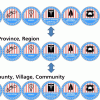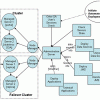Strategic advice to leverage new technologies
Technology is at the heart of nearly every enterprise, enabling new business models and strategies, and serving as the catalyst to industry convergence. Leveraging the right technology can improve business outcomes, providing intelligence and insights that help you make more informed and accurate decisions. From finding patterns in data through data science, to curating relevant insights with data analytics, to the predictive abilities and innumerable applications of AI, to solving challenging business problems with ML, NLP, and knowledge graphs, technology has brought decision-making to a more intelligent level. Keep pace with the technology trends, opportunities, applications, and real-world use cases that will move your organization closer to its transformation and business goals.
Recently Published
Government is the largest institution on the face of the Earth. Citizens worldwide now expect more from their governments than ever before. Perennially, we struggle in the pursuit of government efficiency and cost-effectiveness. We find new levels of government accountability, with renewed mandates for government transparency.
Government is often perceived -- by its most overt critics or ambivalent constituents -- as unnecessarily bureaucratic, fraught with inefficiency, and less than agile in its ability to react and respond to the needs of its citizens and the industries it serves. Examples abound and are highly visible across all levels of government. They include, but are not limited to, the following archetypes:
While IT people have a propensity to make projects out of anything, not perceiving features of an application environment in more detail, and in enough implementation detail, is a flaw in the planning process -- a rookie mistake. In many ways, technologists are obsessed with automating certain features of an application environment, but when it comes to deployment, all brainstorming seems to cease. This isn't a very enterprise-wide or Gestalt view of the world, where the "essence or shape of an entity's complete form" is understood by the application designers.
Last month I said that, according to our research, more than half of organizations currently view mobile BI as a strategic priority for their organizations to have, while others foresee mobile BI becoming a strategic imperative within approximately the next 6-12 months (see "Targeting
In-Memory Technology Gains Popularity in Business Environment
In recent years, demand for new BI technologies has significantly increased amid an expanding desire by business to receive all required information in a timely way without the risk of losing value.
Adopting Open Source Software Tools and Techniques: Part III
This is the final Executive Update in a series discussing the results from a recent Cutter survey on the adoption of open source software tools and techniques by organizational software development teams.
I have spent the last few days working with a customer on Kanban adoption. One of the organization's teams in particular claimed to be highly productive and therefore didn't think Kanban could be of much use. I worked with the team to create a value stream map (VSM) of their process by walking them through these six steps:
If you ask a "process owner" without prompting what specific information is required to properly execute the activities of the process for which he or she is responsible, then the process owner will rattle off a slew of items. However, any attempt to assume these items are attributes of the data architecture and assign them to entities will prove frustrating.












